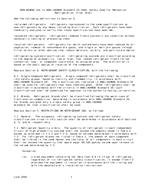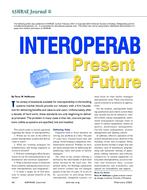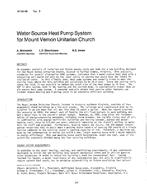Building envelopes, heating, ventilating and air conditioning (HVAC) systems and building occupants interact with each other and with the exterior environment on a dynamic basis. The interactions result in a complex energy transfer between interior and exterior environments. To reduce energy consumption in buildings, design and analysis of building systems should be based on a dynamic model. Mathematical models to predict dynamic conditions inside a building can be developed from analog thermal circuits and from energy balance methods.
Kaya (1976) has reported a technique to develop analytical models from analog thermal circuits. Mehta and Woods (1980) have shown that analytical models based on analog thermal circuits are valid, but too complex for engineering applications.
Mehta et al. (1978) have developed a rational model from energy balance methods for thermodynamic analysis of occupied spaces. The concept of the rational model has been subjected to experimental validation in the Iowa State University Energy Research House, both in the open loop and closed loop modes. The results of the experimental validation are reported in this paper.
Citation: Symposium, ASHRAE Transactions, Volume 86, Part 2, Denver, Colorado
Product Details
- Published:
- 1980
- Number of Pages:
- 24
- File Size:
- 1 file , 1.5 MB
- Product Code(s):
- D-DV-80-04-1


